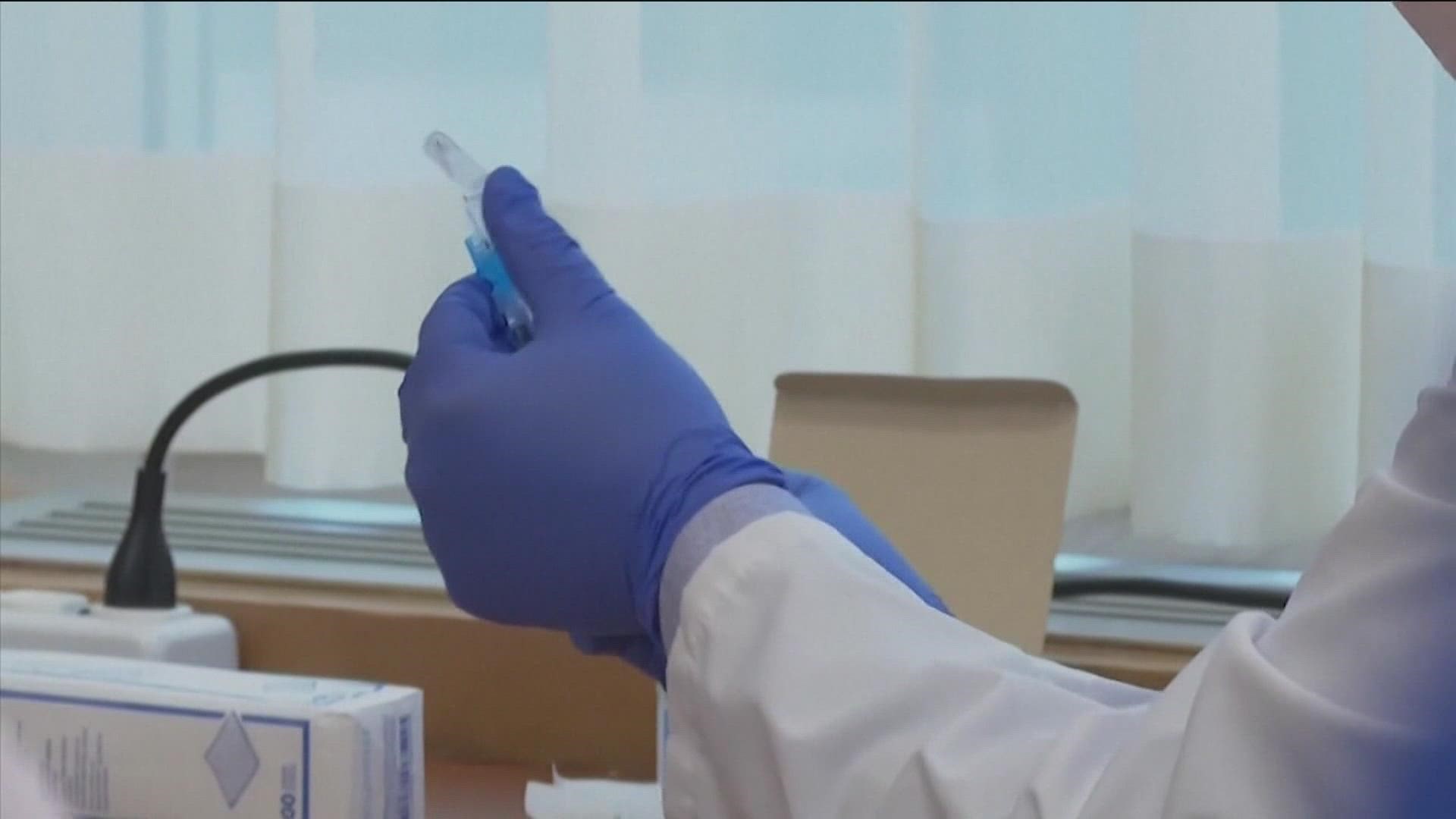ATLANTA — Brand new data was released by the Centers for Disease Control and Prevention Thursday, breaking down vaccinations in children by ethnicity and race as of Aug. 31.
The report compiled data from nearly 100,000 families.
11Alive has gathered insight before on the differences in adult vaccinations by race and ethnicity but when it comes to children the same info has been limited.
This brand new CDC report shows Asian and Hispanic children have higher vaccination rates compared to other ethnicities.
It shows 33.2% of kids 5 to 11 years old are vaccinated, while 59% of children 12 to 15 years old are vaccinated, and 68.6% of 16 to 17 year old have at least one shot.
Anggie Davalos's four children are not part of those percentages.
"I respect people who want to get their children vaccinated, but I don’t plan on it," she said in a Spanish interview, which has since been translated. "God has saved us so far, and unless something else comes up in the future, then maybe. But for now, we have the same beliefs."
The study also highlights vaccination rates for children ages 5 to 17 of different ethnicities and races, with 75.2% of Asian children being vaccinated, 49.1% of Hispanic children being vaccinated, 45% of White children, and 43.1% of Black children.
Davalos, who is Hispanic, said she's surprised the statistic for Hispanic children isn't lower.
“It really makes you think, I wonder if it has to do with all the outreach in our language, which I’ve seen a lot within our community," she said. "I’ve seen a lot of Spanish commercials to get the vaccine. I think that worries people, and makes them want to get the shot. Or maybe they had someone in their family get COVID."
The CDC found the higher rates were among children, whose mother’s obtained a college degree, lived in a household with a yearly income of at least 75,000 dollars, and had received at least one influenza vaccine dose.
Dr. Jayne Morgan, executive director of the COVID Taskforce for Piedmont Healthcare explaine public health experts have played a big role in raising those percentages.
“Certainly we made an effort to make it more language-accessible," she said. "I do something called the stairwell chronicles where I explain about the vaccine in 60 seconds and began adding Spanish subtitles to those and I think people like me started making outreach like that and that’s very helpful."
Dr. Morgan also spoke a lot about efforts to get minorities vaccinated for COVID.
“We saw early on in the pandemic with the first variants, Alpha and Beta, we saw a lot of reticence with many communities of color to step up and take the vaccine but we see that’s taken a complete turn around now," she said.
She said that while Black children have the lowest percentage, they have made strides in getting the community vaccinated.
“When you look at black children, these decisions are being made by their parents. And so what we're talking about is this trust gap, a lack of trust in research, and certainly these vaccines came out of research, a lack of trust in our government," she said.
Dr. Morgan said that trust, is gained with education. She believes public health experts need to go out to these communities and explain why the vaccine is important.
She added that one person can make a difference, as they can potentially influence a family member who might be skeptical.
“I have made that effort and many other physicians like me to go out into the communities to make certain that people can see you. And they have an opportunity to ask questions, and we have an opportunity to bridge that gap," she said.
She said that more efforts need to also be put into rural communities, where not as many people are vaccinated.
"The rural communities are exactly the people who are impacted when we talk about this white demographic, we talk about the demographic of white Americans 65 and older, by and large majority of them are in rural communities, and sometimes have issued the vaccine altogether, or sometimes did step up to get the first series but did not get the booster, also more resistance to mask wearing," she said.
To read the full report, click here.

